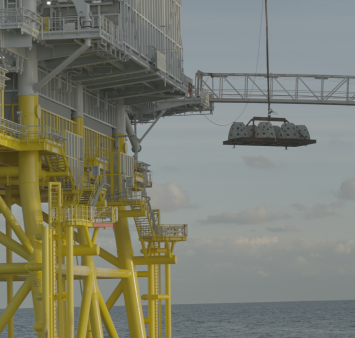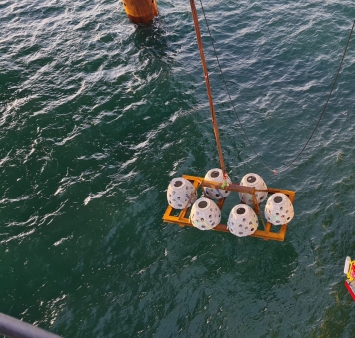newsflash
TenneT places artificial reefs near offshore platform Hollandse Kust (west Alpha)
TenneT, in collaboration with contractor Smulders - EQUANS, has placed several artificial reefs near the offshore transformer platform Hollandse Kust (west Alpha) to gain further knowledge about nature-inclusive construction. This offshore transformer platform will connect the Ecowende (Shell/Eneco) consortium wind farm to the high voltage grid. The aim is to build this wind farm with a healthy ecosystem and as little impact on nature as possible. The artificial reefs are part of a series of ecological measures by TenneT to monitor and encourage nature around offshore wind farms.
By 2050, energy production must be completely climate-neutral. One of the main pillars to achieve this goal is offshore wind energy and the North Sea is becoming our main power plant. However, all this infrastructure may have an impact on the ecology of the North Sea. Saskia Jaarsma, head of offshore development at TenneT: "We are aware of the potential impact on the North Sea. That's why we pay a lot of attention in researching what happens underwater. The installation of artificial reefs is another step in researching, monitoring and stimulating marine life."
Shelter and food
To find out which form works best, two types of artificial reefs have been placed near the Hollandse Kust west alpha jacket, located about 50 kilometers off the coast of Egmond aan Zee. Earlier, similar structures were placed at the TenneT platform at Hollandse Kust north. Six reef cubes are attached to one frame. Hollow square blocks made of nature-friendly recycled material with round holes in the walls. On the other steel frame are six reef balls, a similar structure but in the shape of a ball. "These artificial reef structures are meant to stimulate marine life. With these, you create potential spots where coral and algae settle. Earlier research shows that fish, crabs and lobsters like to visit these spots for shelter and to look for food," says Annemiek Hermans. As a marine biologist, she advises TenneT on nature-inclusive construction at sea.
Read the entire article on TenneT's website.












